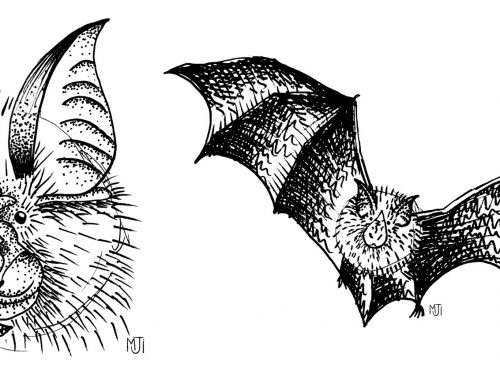Claire Andrews of CA Ecology, with funding from Wokingham Borough Council, has sifted through the bat group’s records to undertake a review of the status of bats in Berkshire. The final document can be found here. Claire writes:
Of the 18 UK bat species 12 are considered to be breeding or resident in Berkshire with an additional two species recorded as present but not confirmed resident. The list below summarises what the current records enable us to conclude about the status of each species in Berkshire.
- Breeding : Barbastelle, Brown long-eared, Common pipistrelle, Daubenton’s, Natterer’s, Noctule, Serotine, Soprano pipistrelle
- Resident (not confirmed breeding) : Nathusius’ pipistrelle
- Resident? : Bechstein’s, Brandt’s, Whiskered
- Not resident : Leisler’s, Greater horseshoe
- Extinct : Grey long-eared, Lesser horseshoe
- Not recorded : Alcathoe, Greater mouse-eared
For me some of the most interesting points from the review are:
Nationally we only have sufficient data on two species to have confidence in population status estimates.
Nationally the population of soprano pipistrelle is estimated to be higher than that of common pipistrelle.
We as a bat community (me included) are not great at sending in our records to the Records Officer. The exercise has stimulated me to pull in records that I thought I had (and definitely should have) submitted. Hopefully the review will encourage more records and remind us all of the importance of sending them in.
While there were some surprises it is nice to see that in some instances bats do read the books! For example, when we look in detail at the type of roosts recorded for brown long-eared bats by far and away the most common type of roost is within a loft space, though of course there are roosts recorded in many different situations too including behind a skirting board.
When comparing common and soprano pipistrelle bats there are a similar number of records overall but, although we have almost half the total number of soprano pipistrelle roost records compared to common pipistrelle, there are 15% more soprano maternity roosts recorded and some of those roosts represented large numbers of bats, over 600 in one case. Equally interesting is the number of confirmed maternity roots with fewer than 10 bats.
Nathusius’ pipistrelles have been our triumph of recent years. With a starting point of just a handful of records before we joined the National Nathusius project we have now ringed and recorded over 20 individuals. We haven’t managed to confirm the location of a breeding roost yet but we are pretty certain there is one somewhere in the Caversham area.
The distribution map for noctules, with the majority of records to the east, is a little surprising considering how ubiquitous most people consider this species to be. Though the vast majority of roosts are in trees, as one would expect, there is a curious record of a roost above a shop in Bracknell town centre which is one to puzzle over.
Leisler’s is an interesting case as the lack of any other record other than potentially suspect acoustic records means the species is recorded as not resident, one could even argue not recorded.
Of the Myotis bats Natterer’s records surprised me as I feel fairly familiar with them across the county not least because it is the species we encounter most often in hibernation checks. There is a lack of acoustic records which is to be expected but the low number of roosts is a little surprising and highlights the importance of those that we do know about.
From the records there is a tickle of a suggestion of roosting greater horseshoe bats in the Remenham area which is potentially exciting.
When we can get back to some on the ground fieldwork again it would be great to follow up on some of these records – high on my hit list would be to find a Nathusius’ pipistrelle maternity roost but also following up records of Myotis spp roosts to see if we can identify some of the whiskered and Brandt’s roosts and who knows maybe even Alcathoe and Bechstein’s!
Claire Andrews






